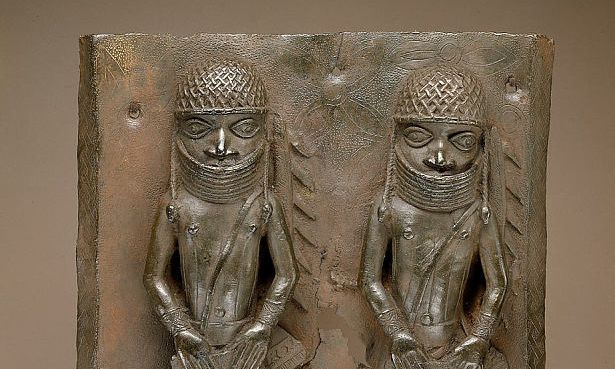A Benin Kingdom plaque (mid-16th to 17th century) in the Smithsonian's collection thought to have been looted in the 1897 raid
The Smithsonian Institute’s National Museum of African Art in Washington, DC has removed its Benin bronzes from display and is planning to repatriate artefacts that were looted by the British in an 1897 raid on the royal palace, according to the museum’s director, Ngaire Blankenberg.
“I can confirm that we have taken down the Benin bronzes we had on display and we are fully committed to repatriation,” Blankenberg says. “We cannot build for the future without making our best effort at healing the wounds of the past.”
The museum had 21 objects from the Kingdom of Benin on display earlier this year. Its online database lists 38 objects from Benin in the collection. Around half have been traced to the British punitive expedition to Benin in 1897, including several plaques, commemorative heads and figures. Provenance research on other items is still ongoing.
After the 1897 looting, artefacts from Benin’s royal palace were sold off and scattered around the world; Benin objects are now held by more than 160 international museums, including several in the US. The University of California’s Fowler Museum has also said it plans talks with the Nigerian authorities on the future of 18 objects in its collection from the Kingdom of Benin.
Last week, two British universities returned looted artefacts to Nigeria: the University of Aberdeen handed over the bronze head of an oba, or king, and Jesus College Cambridge returned a bronze sculpture of a cockerel.
In mid-October, Germany and Nigeria signed a memorandum of understanding setting out a timetable for the return of around 1,100 Benin sculptures from German museums, with the first repatriations envisaged in the second quarter of 2022.
In June, the Metropolitan Museum of Art in New York announced that it will be sending three objects back to Nigeria. Two of the works, a pair of 16th-century Benin Court brass plaques of a Warrior Chief and Junior Court Official, were donated to the museum in 1991 by the Modern art dealer Klaus Perls and his wife Dolly, while the third, a 14th-century Ife Head, was recently offered to the museum for purchase by another collector.

